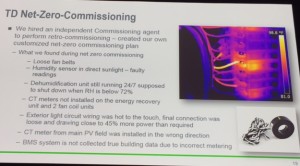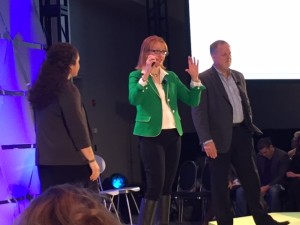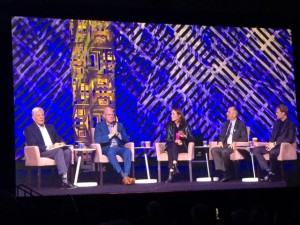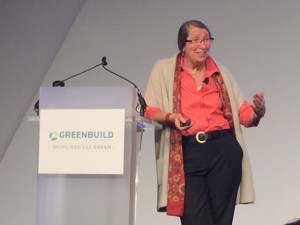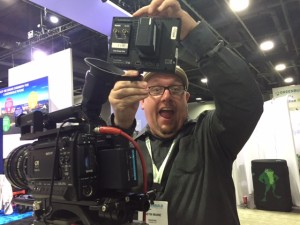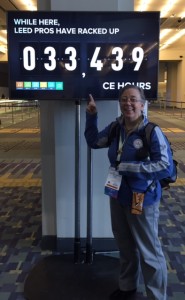
Greenbuild: There is work to be done!
Being with tens of thousands of my peeps is always healing, energizing and exciting. And it is challenging.
I just returned from a few excellent days at Greenbuild in Washington, DC. For any of you who need background, the U.S. Green Building Council is the creator of the LEED rating systems and the premier green building not for profit in the world. They have also franchised the Green Building Council name and the LEED rating system to 150 plus countries, and their admirable mission is to achieve green buildings for all within a generation. I have been involved locally, regionally and nationally for about 12 years.
The Greenbuild conference has been going on for 15 or so years, with its beginning in a small 200 person meet-up, and it is now hitting 25-30 thousand in attendance. The best part about the USGBC is that this is not a professional association, or a trade group, but a totally open organization for anyone who cares to learn about, work on, or promote healthier and more effective buildings and communities. Because buildings affect us all.
I tweeted like a mad woman, so if you want to see the blow-by-blow of the sessions I attended and the products that intrigued me, follow @greenerjsa on Twitter, or search #greenbuild to see the whole array of tweets from many of the people attending.
This was the first year that the overall message was not focused on “making the case” for green buildings, and refreshingly, every session did not start with a climate change primer. This was thrilling. We’ve finally made it, thought I, because when you stop defending and explaining, you can get the real work done. There were wonderful, honest, and inspiring case studies, new alliances with other health-supporting guidelines and standards, and distinct clarity of efforts linking health, resiliency and the environment.
One especially useful session I attended was a case study of a TD Bank branch, as they plan to bring ZNE to their whole fleet of future expansion. It was useful because it talked about the work they had to do over the first 2-3 years of operations in order to get the building to zero net energy performance. It’s not “set it and forget it” and they illustrated the magnitude and complexity of the tweaking that will be part of any truly zero net energy endeavor. From choosing a MUCH more efficient coffee pot to placing a sign in the mechanical room admonishing people to call before making any changes that would affect energy use to identifying loose wiring connections (which leak significant heat and energy): we need all of it.
And they did this presentation with the perfect tone, inviting questions and sharing experiences with the attitude of “there’s no embarrassment here. All of us have to learn this stuff and we hope our struggles can help make yours a bit less”. They showed it is possible to do this now while being clear that ZNE will take work. Think of it, though. If we can do it with some effort now, the next ten years will be amazing in the building industry, and I am an eager part of that transition.
Another deeper session was on leading in sustainability, and three excellent presenters talked about their experiences with Skanska, Interface and Harvard Center for Health and Sustainability, respectively. The main thrust of the information was that integration of sustainability requires a different managerial structure, less hierarchical or command /control. This needs to occur to achieve real integration of goals and efforts as well as to identify all the co-burdens and co-benefits of the work in planning. So the best teams are eclectic and cross not only siloes in the company, but layers of power as well.
Some companies are able to make this change fairly quickly, but most need to access the command and control structure in order to more fluidly roll out projects created in an integrative idea-flow style. These two structural styles can successfully co-exist, and so much can be done to create a culture and movement of ideas even in a rigid hierarchy. “We have collective capacity to foster idea flow” said the Harvard presenter. It was exceptionally clear, however, that even after 10-12 years of focused work on change and integration of sustainable practices, the represented companies are just hitting their stride and they have been learning all the way. They’ve identified ways to include and reassure more traditional leaders, they’ve included communications experts to internally market the goals, and they’ve added measurement and transparency to each layer. Skanska, Harvard and Interface are all leading and successful companies with sustainability as a true core principle. Read “mid-course correction” or “confessions of a radical industrialist” for the revelations and efforts that set Interface on its current path, and learn about the man behind this re-tooling at the Ray Anderson Foundation.
I was a bit hesitant going into the closing panel, as it was so low-key compared to the spirit of the rest of the event, but my hesitation flew away after the first question. The mightiest voices from Kohler Co, Starbucks, UTC, and Vasakronan (Sweden’s largest real estate company) sat with Kevin Close (formerly of NPR) to discuss sustainability in their firms and their view of the market.
My take-away is that sustainability builds business success. Here are the best thoughts from the discussion:
- Integrate sustainability or go bankrupt.
- When our baristas are happy, sales go way up, and the sustainable approaches we implement make our employees happy.
- Companies not embracing this (sustainability) will miss out on the best talent.
- Where will green building go if we stop chasing the 1% if energy costs in buildings and focus at the same time on optimizing the buildings for the users (increasing productivity, lowering health and risk, and improving retention rates). People are 90% or more of the cost of business operations.
- Embrace transparency, it makes your employees proud.
On a lesser note, I was disappointed, very disappointed, with the last speaker, Joe Romm of Climate Progress. He has written a climate change primer that is coming out in November, he is quite brilliant (a PHD from MIT) AND he has created huge change through his “indispensable blog” on climate change. However, he went through the math, graphs and statements of our dire consequences, including how we need to convince people and reduce our consumption if we are to live on. I was so angry. I’d spent the last three days feeling invigorated and hopeful, with a re-solidified purpose, and the dark data dump threatened to sink me once again. It was especially jarring after hearing from Rick Fedrizzi (founder and CEO of the USGBC) about his new book which touts how profitability can be a sustainable option and that it will be the approach that will change the world. (Green Think: How Profit Can Save the Planet) I felt like Mr. Romm was saying something like “you all have a nice little fantasy going on, here, but realize, we’re screwed no matter what you do.” And, quite frankly, there is no time for this negativity.
My response to his downright black focus is…yes, okay, this sucks, large. And my question is how does the hockey stick co2 graph and data on population and info on the literally millions of people in harm’s way from sea level rise help us? What do we get from defining all that we need to NOT do?
In her session on Thursday of this week, Sarah Susanka was very clear…defining what you don’t want to do or to have or to be is easy and…pointless.
This was also brought up clearly in the Sustainability Leaders sessions with the example “You don’t get married with the sole goal being not getting divorced.” The real power of change (read the Not So Big Life) comes when we define our goals for achievement. This gives us action and power. What do we want? We don’t want to solely reduce energy use. If that is our goal then we will certainly proceed badly. We want to find a way to do all that we want to do while we support our health and prosperity and the planet on which we rely.
I believe, as Paul Hawken does, that climate change isn’t happening to us, but because of us, or maybe even FOR us. So, at the very least, we are a necessary participant in the solution and this is thrilling and motivational. If these changes taking place FOR us we must not only work to survive, but to find the reason this is occuring FOR us so we can truly thrive.
- Is the earth bucking us to teach us our limits, or to help us innovate and actually “drawdown” the GHG in the atmosphere?
- Is the message for us about community, value and interdependence?
- Are we being somehow influenced and guided to reassess our process of judging costs to bring in heretofore ignored and terribly pesky externalities such as human health?
- Do we need to bring back a strong core of compassion and stewardship as stated by the Pope?
I hear a resounding chorus of “yes” from my body, mind, and soul.
This is a learning moment we have brought ourselves to, and I believe we know what we need to learn and apply. If we embrace the thrill of knowledge and insight we will not only manage the crisis we face but become better, stronger and plain old happier within and because of that crisis. We will be able to do the continual improvements, like TD Bank, and transition our company structures as business leaders such as Interface have managed to do. We will learn to support and cherish our building users and our employees, as Starbucks has, and we will recognize they are our most valuable assets. We will support them with green and healthy buildings, and we will work in tandem with nature to do this well.
That is my message from Greenbuild – all the hype, the parties, the creative stage sets, wonderful graphics and film crew, the great talks, the vibrant and dedicated volunteers, passionate leaders, and impressive products and tech are the elements behind this revelation. I have come to the recognition that we need to accept the opportunities climate change is forcing us to see. Once we do, our methods and partners and goals will become clear and aligned, and with exceptional and focused work a better future will be created: for us and by us.
Let’s get to work!
Jodi
1 Like this post (no login required)
